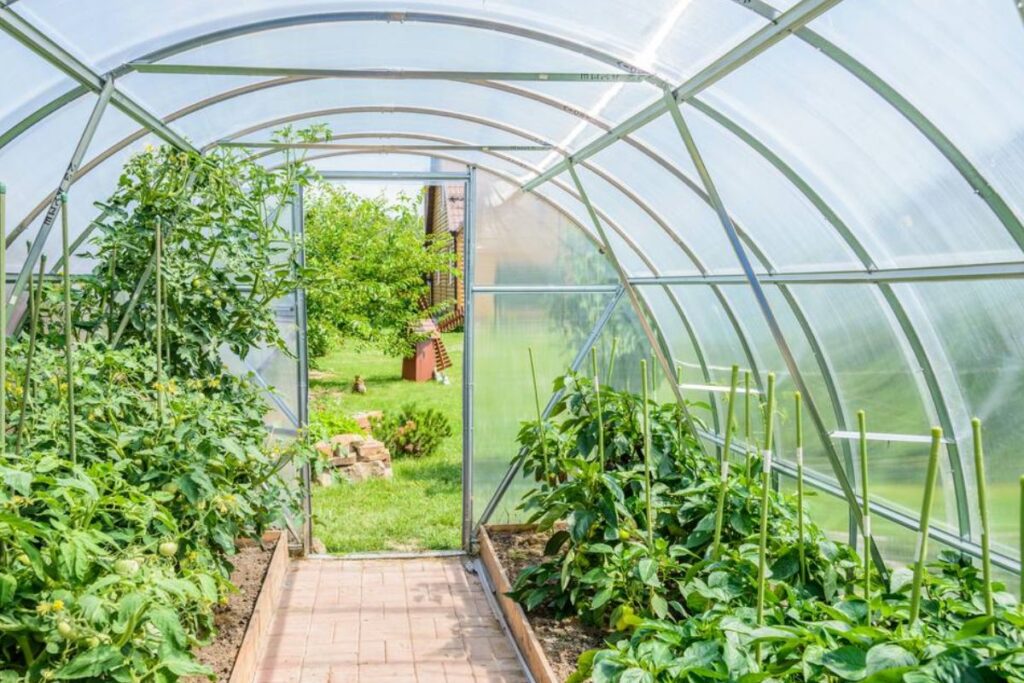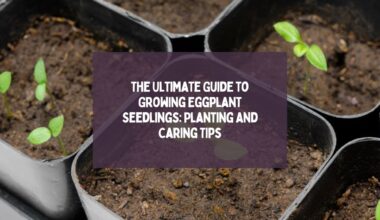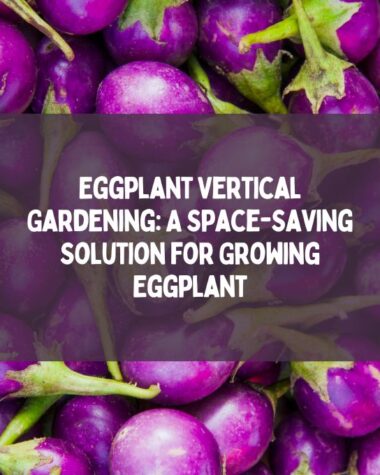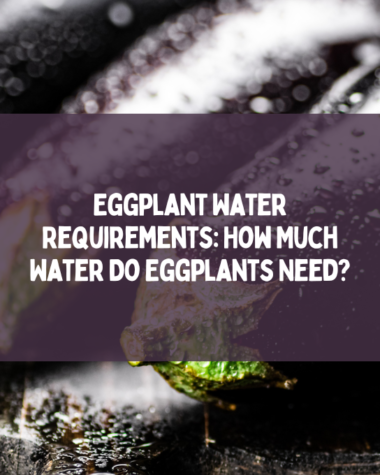To grow delicious aubergines in your polytunnel, start by preparing the soil with well-rotted compost and a balanced fertilizer. Choose a sunny location and provide consistent watering and good air circulation. Pinch out the growing tip when the plant is about 30 cm tall to encourage bushier growth and harvest the fruit when it is shiny, firm, and fully colored.
Growing aubergines in a polytunnel is a great way to enjoy deliciously fresh aubergines all year round. Not only are these versatile and tasty vegetables easy to grow, but they thrive in the protective environment of a polytunnel.
In this article, I’ll talk about how to grow aubergines successfully in your polytunnel, from getting the soil ready to pick the fruits. So if you’re looking to extend your growing season and enjoy a tasty home-grown treat.
Read on to find out how to grow delicious aubergines in your polytunnel!
The Basics of Growing Aubergines in Polytunnel

Growing aubergines in a polytunnel can be a rewarding experience. Aubergines are one of the most rewarding vegetables to grow, as they require very little effort and produce delicious fruits.
Here are the basics of growing aubergines in a polytunnel:
- Choose the right variety: When growing aubergines in a polytunnel, it is important to choose a variety that is suitable for your climate and the size of your polytunnel. Choose varieties such as Patio Baby, Black Beauty, or Money Maker for the best results.
- Prepare the soil: The soil in your polytunnel should be well-draining, rich in organic matter, and slightly acidic. Adding compost or aged manure to your soil will help it reach the optimal conditions for growing aubergines.
- Plant seedlings: Aubergines should be planted in containers or directly in the ground once all danger of frost has passed. Make sure to space them out at least one foot apart.
- Provide support: As the plants grow, you will need to support them. This can be done by tying them to stakes or providing trellises or cages.
- Water and fertilizer: Aubergines require plenty of water and fertilizer throughout the growing season. Water deeply but not too often, and make sure to use an appropriate fertilizer for the best results.
- Harvest: When the fruits are large enough, usually after around 65 days, you can harvest eggplants. Pick the fruits when they are firm and full-colored.
The Best Varieties of Aubergine to Grow in a Polytunnel
When it comes to how to grow aubergines in a polytunnel, it is important to select the right variety for your environment. Different varieties of aubergine have different growing characteristics. They need different levels of care. Popular varieties include the glossy black and purple Black Beauty, the deep purple Violetta di Firenze, and the white-skinned Casper.
For a higher yield in cooler climates, opt for the longer-maturing varieties such as the Long Purple or Little Fingers. If you’re looking for early harvests and bigger fruit, choose the shorter-maturing varieties such as Nadia or Rosa Bianca. For small-fruited varieties, try the small, round Rocadero or the more oblong-shaped Tonda di Piacenza.
Lastly, if you’re looking for something unusual, consider the white-fleshed Japanese eggplant, a thin-skinned and delicately-flavored variety. Whatever variety you choose, ensure that you are providing adequate nutrition and water for the best results.
Step-by-Step Instructions For Growing Aubergine in Polytunnel

If you’re interested in growing aubergine in a polytunnel, you’ll be pleased to know that it’s a relatively straightforward process.
Here’s a step-by-step guide for growing eggplants in polytunnel.
Preparing Your Polytunnel
Before planting your aubergines, it’s important to prepare your polytunnel. This involves clearing any debris or weeds from the area and adding compost or fertilizer to the soil. The soil in your polytunnel should be well-draining and rich in nutrients. You might want to install a drip irrigation system to make sure that your plants always get enough water.
Preparing the Soil in Your Polytunnel
When you are looking to grow aubergines in a polytunnel, the soil is a crucial element of the process. Aubergines require well-drained, nutrient-rich soil to ensure proper growth and a bountiful harvest. First, make sure the soil has good drainage by ensuring it is not compacted.
If your soil has a lot of clay content, mix in some sand or other material to improve drainage. You can also add compost or aged manure to help enrich the soil and give your aubergine plants the nutrients they need.
When preparing the soil, it’s important to test the pH levels and adjust them as necessary to make sure they are between 6 and 7. This will help ensure that the soil is ideal for growing aubergines in a polytunnel. Once you have prepared the soil and checked the pH levels, you can begin planting your aubergine seeds or seedlings in your polytunnel.
Planting and Caring for Your Aubergine Plants
Once your soil has been adequately prepared, it’s time to start planting and caring for your aubergine plants in your polytunnel.
Here’s how to grow aubergines in a polytunnel:
- Start off with young seedlings or transplants and plant them about a foot apart.
- Water your plants regularly and keep the soil moist.
- Use mulch around your plants to help retain moisture and stop weeds from taking over.
- Feed your plants with a balanced fertilizer such as compost or fish emulsion every few weeks.
- Keep an eye out for signs of pests or diseases and take action immediately if necessary.
- Harvest your aubergines when they’re ripe and store them in a cool, dry place. When your aubergine plants start flowering, it’s time to start pollinating them.
You can do this by hand using a paintbrush or a cotton swab, or you can use a fan to simulate the wind and blow the pollen from flower to flower. Once you’ve mastered how to grow aubergines in a polytunnel, you’ll be able to enjoy an abundance of delicious aubergines for months!
Harvesting and Storing Your Aubergines
Harvesting your aubergines is relatively simple and can be done by simply cutting them off the stem with a sharp knife or shears. You need to wait until the aubergines are fully mature, as this will give you the best-tasting fruits. Once the aubergines have been harvested, you need to store them correctly to preserve their flavor and quality.
You can store your aubergines in several different ways. For short-term storage, you can keep them in the refrigerator for up to a week. If you are planning to store them for longer periods, you can either freeze them or can them. When freezing, make sure to blanch the aubergines first and then place them in an airtight container before placing them in the freezer.
Canning your aubergines requires sterilizing the jars and then boiling the aubergines in a solution of vinegar and water. This will help to preserve their flavor and quality over a longer period.
Once stored correctly, your aubergines will stay fresh and flavorful for months. Enjoy!
Conclusion
Growing aubergines in your polytunnel is an excellent way to make sure that you have a reliable supply of fresh, delicious vegetables throughout the year. With the right varieties, soil preparation, and care, you can grow your aubergines with ease and enjoy their unique flavor. With a little patience and dedication, you can be sure that your aubergines will be the highlight of your home-grown harvest.







